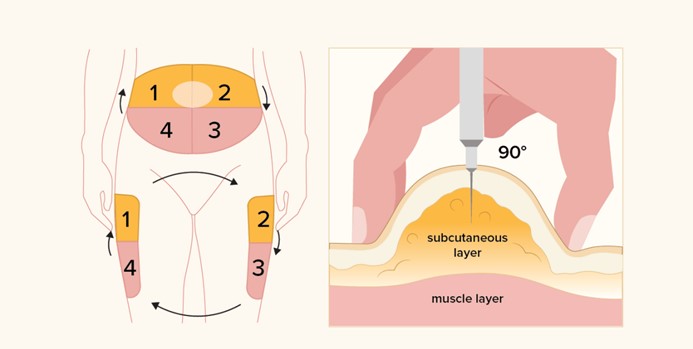Which abbreviation is on the official "Do Not Use" list of the Joint Commission?
OS
QD
PO
OD
The Correct Answer is B
QD is an abbreviation for "quaque die" which means "every day" in Latin. However, QD is on the official "Do Not Use" list of the Joint Commission because it can be mistaken for QOD, which means "every other day" in Latin¹². This can lead to medication errors and patient harm. Therefore, the Joint Commission recommends writing "daily" instead of QD.
The other options are not on the official "Do Not Use" list of the Joint Commission. OS, PO, and OD are abbreviations for "oculus sinister" (left eye), "per os" (by mouth), and "oculus dexter" (right eye) respectively. They are commonly used in ophthalmology and pharmacy³. However, they should be used with caution and only when appropriate, as they can also be confused with other abbreviations or symbols.
Nursing Test Bank
Naxlex Comprehensive Predictor Exams
Related Questions
Correct Answer is D
Explanation
This statement is correct because the abdomen has a large surface area and a good blood supply, which allows for a consistent and predictable absorption of insulin. Insulin is a hormone that regulates blood glucose levels and needs to be delivered in precise doses to avoid complications such as hypoglycemia (low blood glucose) or hyperglycemia (high blood glucose).
The abdomen is also easy to access and has less variation in fat thickness, which reduces the risk of injecting into the muscle or the skin instead of the subcutaneous tissue. The subcutaneous tissue is the layer of fat and connective tissue below the skin and above the muscle, where insulin injections are given.
The other statements are not correct because they do not explain why the abdomen is the preferred site for subcutaneous insulin injections or they contain false information.
a.It is the least painful location for this injection. This statement is false because pain is subjective and depends on many factors, such as the type and size of the needle, the technique and speed of injection, the temperature and viscosity of the insulin, and the individual's pain tolerance and sensitivity. The abdomen may not be the least painful location for everyone, and some people may prefer other sites, such as the arms, thighs, or butocks.
b.There are fewer insulin side effects when given in this site. This statement is false because insulin side effects are not related to the site of injection, but to the dose, type, and timing of insulin, as well as the individual's response to insulin and other factors, such as diet, exercise, stress, illness, and medications. Insulin side effects may include hypoglycemia, weight gain, allergic reactions, lipodystrophy (changes in fat tissue), or edema (swelling).
c.It causes less bruising at the site. This statement is false because bruising is caused by bleeding under the skin due to damage to blood vessels during injection. Bruising can occur at any site of injection and depends on many factors, such as the type and size of the needle, the technique and speed of injection, the pressure applied after injection, the individual's clotting ability and blood thinning medications, and the presence of any underlying conditions that affect blood vessels or circulation.

Correct Answer is D
Explanation
To answer this question, we need to calculate the infusion rate in mL per hour by using the following formula²:
Infusion rate (mL/h) = Dose (mcg/kg/min) × Weight (kg) × 60 min/h × Volume (mL) / Concentration (mcg/mL)
In this case, the infusion rate is:
Infusion rate (mL/h) = 3 mcg/kg/min × 70 kg × 60 min/h × 250 mL / 2500 mg
We need to convert lb to kg by dividing by 2.2
Infusion rate (mL/h) = 3 mcg/kg/min × (154 lb / 2.2 kg/lb) × 60 min/h × 250 mL / 2500 mg
We need to convert mg to mcg by multiplying by 1000:
Infusion rte (mL/h) = 3 mcg/kg/min × (154 lb / 2.2 kg/lb) × 60 min/h × 250 mL / (2500 mg × 1000 mcg/mg)
We can simplify the equation by canceling out some units and numbers:
Infusion rate (mL/h) = 3 × 154 × 250 / (2.2 × 2500 × 1000)
We can use a calculator to get the final answer:
Infusion rate (mL/h) = 12.6363636363636 mL/h
Whether you are a student looking to ace your exams or a practicing nurse seeking to enhance your expertise , our nursing education contents will empower you with the confidence and competence to make a difference in the lives of patients and become a respected leader in the healthcare field.
Visit Naxlex, invest in your future and unlock endless possibilities with our unparalleled nursing education contents today
Report Wrong Answer on the Current Question
Do you disagree with the answer? If yes, what is your expected answer? Explain.
Kindly be descriptive with the issue you are facing.
